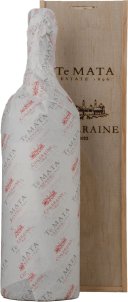Château Pape Clement
Planted in 1300, the estate is the oldest planted vineyard in the Pessac-Léognan appellation, ranked among the Premiers Crus for red wine in the Classification of Graves wine of 1959.
Clos Saouma 'Omnia' Chateauneuf-du-Pape Rouge
Chateau Haut Bailly Pessac
Chateau Smith Haut Lafitte R
With a name like George Smith, you could be mistaken for thinking this vineyard was on the northern side of the 'channel', but alas, it resides in Pessac-Léognan in France's famed Bordeaux region. Bought by the Englishman in 1720, the wine still bears his name. The red wine that comes out of the estate is one of aromatics and spiciness and of recent times, more opulence and fruit weight.
Chateau Duhart-Milon Rothschild 4Me Cru Classe Pauillac
Château Duhart-Milon is a fourth growth (Quatrième Cru Classé) estate in the Pauillac appellation of Bordeaux. Part of the Domaines Barons de Rothschild, the wine is made by the same winemaking team as Château Lafite. A blend of Cabernet Sauvignon with a substantial component of Merlot, the Grand Vin is matured for 18 months in approximately 50% new French oak barriques. Château Duhart-Milon is typically a sturdy solid Pauillac with firm structure and earthy savoury richness.
Chateau Pavie-Decesse Grand cru classe
Château Pavie Decesse is a St. Emilion Grand Cru Classé property in the Côtes sub-district, considered the equal of its illustrious neighbour, Chateau Pavie. The origins of both can be traced back to ancient Roman times. The 3.5ha vineyard, on chalky, limestone and clay soils and contiguous with Pavie, is 90% Merlot and 10% Cabernet Franc. Following cold maceration, the Chateau wine is vinified in temperature-controlled oak vats. Malolactic fermentation takes place in French oak barrels. The wine is aged in 80% new oak for between 18 and 24 months, depending on vintage character. Production is small, around 650 dozen each year. The hedonistic Pavie Decesse style combines opulent, rich, sensuous textures with minerality, freshness and concentration. Due to its lush style Pavie Decesse drinks well young, yet does develop additional complexity with time in the cellar. Wine quality has been consistently excellent under the ownership, since 1997, of Gerard and Chantal Perse.
Chateau Rauzan-Segla 2me cru classe
One of the original Second Growths of the Bordeaux Classification of 1855, Rauzan-Ségla's 51 hectares of mineral rich soils begin on the banks of the Gironde, on the left bank of Bordeaux. A complex mix of gravel, clay and limestone subsoil imparts a richness and complexity to the Cabernet (62%), Merlot (36%), Cabernet Franc (1%) and Petit Verdot (1%) grapes used to produce this powerfully intense and elegant wine. The estate was last sold in 1994 to the Wertheimer family of Chanel, who employed former Château Latour winemakers, David Orr and John Kolasa. Nicolas Audebert, the former winemaker at Cheval des Andes, the LVMH property in Mendoza Argentina, was hired to succeed John Kolasa following his retirement in 2014.
Château Lascombes Margaux
Château Lascombes was a small property by Bordeaux standards up until 1951, which then grew to beyond its means until the most recent ownership change which has seen better fruit selection and a creation of a second label to produce an estate wine of purity and concentrated flavours. Using the talents of Dr Alain Reynaud and Michel Rolland the wines continue to impress in recent years, namely this spectacular 2009 vintage which is proving to be one of the greatest vintages in the past 100. Even at this early stage the Lascombes looks superb with balance between power and opulence treading a near perfect line.
Te Mata Estate Coleraine Cabernet Merlot
Te Matas Hawkes Bay estate is a prestigious winery with a rich history, producing some of New Zealands most celebrated wines. If the Langtons Classification crossed the Tasman, Te Mata Coleraine would sit alongside Grange at its very pinnacle. Established, esteemed, outstanding vintage after vintage, the glowing adjectives come thick and fast.
Sena Cabernet Merlot Carmenere, Aconcagua Valley, Chile
Chiles answer to first growth Bordeaux, Viña Seña is one of the countrys most sought after wines. In his reviews and commentary on the wine, James Suckling has played a significant role in highlighting Viña Señas credentials as world-class. While comparisons to Mouton Rothschild or Harlan can and have (again, Suckling) been made, one of the more interesting features of this wine is how well it drinks when young. For a Cabernet-based blend in this class, Viña Seña leaps out of the gate showing cassis and fresh blueberries. This is altogether very gratifying but theres so much more in store. The length, depth and breadth make this a great working example of what we mean when we talk about three-dimensionality. High-wire act acidity and strong-man fruit, this circus of sensory pleasure is even more appealing considering that for the price of one Bordeaux first growth, youll have six of these. Hedonists take note.














